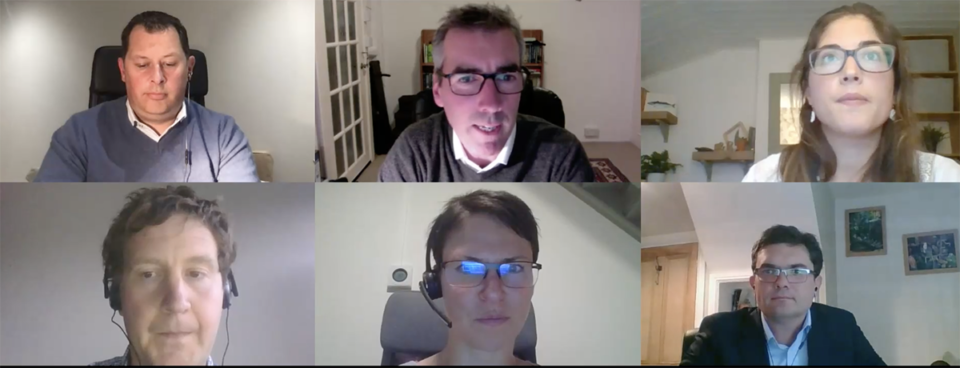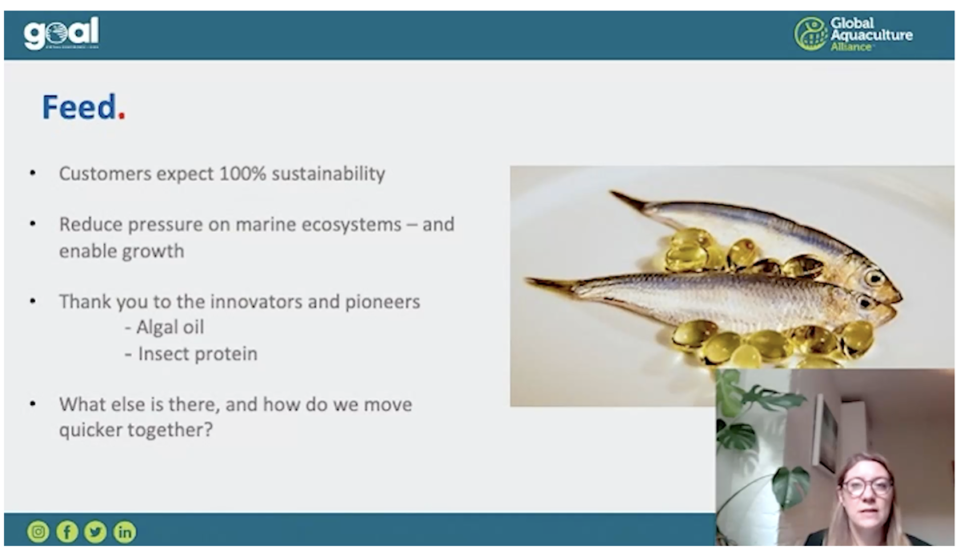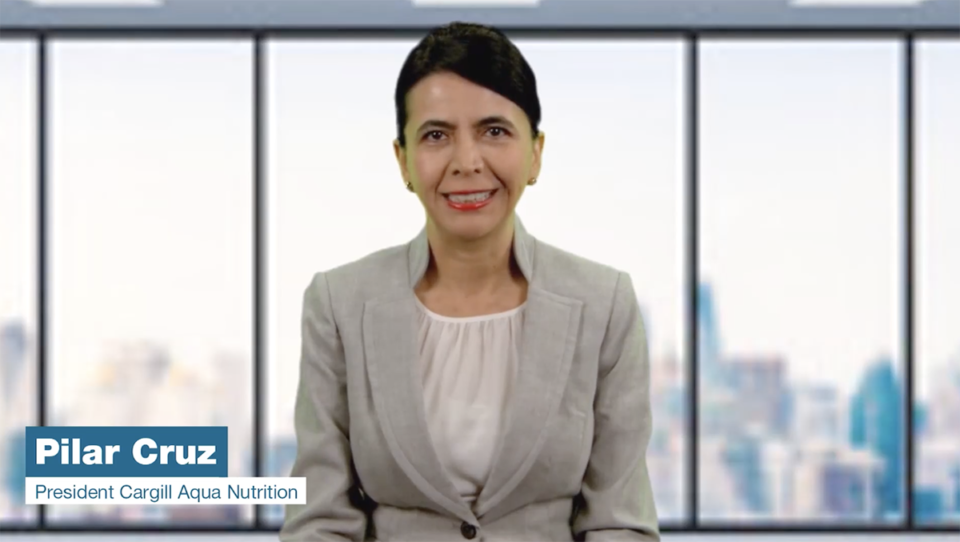Tesco, Cargill lead a line-up of big hitters at world’s leading aquaculture conference

Day 2 of the Global Outlook for Aquaculture Leadership (GOAL) conference looked at how major retailers and supply companies approach to environmental concerns. Presenters agreed that value-chain collaboration is crucial to maintaining a sustainable industry.
Anna Turrell, head of environment for Tesco, one of the top retail chains in the United Kingdom, explained that as leaders in sustainability, the company is focused on delivering low-impact protein, and that seafood is an important part of this portfolio.
“We have an imperative to source and delivery healthy, sustainable and accessible food to our growing global population. In doing so, we must tackle systemic issues such as food waste, biological diversity, ecosystem degradation and inequality,” she said.
Tesco has partnered with the World Wildlife Fund for Nature (WWF) to half the environmental impact of the average UK shopping basket. Consumers, Turrell explained, are increasingly knowledgeable and concerned about the environment. However, in order to effect change, there needs to be continuous engagement with suppliers, processors, packaging and transport companies. Suppliers are encouraged to sign up to PAS 1550, the code of practice for tackling illegal, unreported and unregulated (IUU) fishing illegal fishing and human rights abuses.

The panel agreed that the impacts of feed production are a key factor to be addressed, with greater efforts made to ensure use of certified sustainable fish stocks, investigate more alternative proteins and oils for feed, and achieve zero deforestation on terrestrial ingredients.
Pilar Cruz, president of Cargill Aqua Nutrition, explained that there were challenges to ensuring sustainable growth of the feed industry, in order to supply a demand for farmed seafood that is predicted to more than double by 2050.
Cruz said that Cargill has gradually increased its use of novel ingredients such as microalgae and insect meal, in collaboration with customers, and that there are some exciting sources of the omega-3 fatty acids DHA and EPA to evaluate.
However, new sources also need to be able to upscale sustainably and to ensure their carbon footprint is in line with acceptable norms, as life-cycle assessments (LCA) show large variations between type and supplier.
Cargill aims to use 100 percent Marine Stewardship Council-certified marine ingredients by 2025 and is already incorporating higher proportions of trimmings from seafood processing in its feed to maintain the balance of marine ingredients.
“Our goal is to provide an increasingly wide basket of sustainable, healthy and nutritious raw materials that meet the needs of the aquaculture industry, and we are engaging with suppliers and stakeholders to drive change. We are investing to have a positive impact on the planet,” Cruz said.

Dave Robb, director of sustainability for Cargill, joined the ensuing panel discussion to explain that the company had investigated many dozens of different ingredients over the past few years, but few offered the right price points versus benefits for customers.
“Our customers are sensitive to price change, which in turn is dictated by the retailers, and we have to work within these constraints,” said Robb. “We can’t force fish farmers to buy particularly raw materials from us, but if retailers list them as a requirement on purchasing specifications, it will pass up the supply chain to us. Everyone needs to agree to the overall goal, so that we can achieve results together.”
Graham Ellis, CEO of Ocean Harvest Technology, agreed that supply chain help was needed to enable fish farmers to change their business practices to use new feeds.
“New ingredients may not find a niche immediately, even if they deliver outstanding benefits in mortality, prevent societal health issues by reducing antibiotic misuse, or correct an environmental disaster in progress. It’s difficult to get them accepted,” he said.
Cargill works with the ProTerra Foundation, whose MD, Emese Brosz, spoke about developing standards for non-GMO crops, food and feed, and their work to increase market uptake of certified-sustainable soy in fish feed.
“Land conversion is the key risk, and this year there have been a higher number of fires in Brazil to clear land than in previous years, yet still people buy unsustainable, uncertified soy. Globally, only 6 percent of soy production is certified and just 3 percent has deforestation certification, but we are working to improve this percentage,” she said.
[Editor’s note: GAA President George Chamberlain added at the end of the conference that the U.S. Soybean Export Council stressed that its Soy Sustainability Assurance Protocol provides an additional 20 million metric tons of sustainable soy.]
More than 7 million metric tons of soy is exported from Brazil to the EU each year and China buys even greater quantities. Brozs echoed the need for supply chain collaboration to help achieve further improvements, and the panel agreed that getting China to join the sustainability discussion would be a challenge.
On-pack labelling was discussed as a potential means to get greater buy-in from consumers, but with a plethora of information already on packaging, such a move could lead to confusion. The rise of e-commerce offers one potential solution, as consumers often take more time to read information about their purchases online.
Follow the Advocate on Twitter @GAA_Advocate
Now that you've finished reading the article ...
… we hope you’ll consider supporting our mission to document the evolution of the global aquaculture industry and share our vast network of contributors’ expansive knowledge every week.
By becoming a Global Seafood Alliance member, you’re ensuring that all of the pre-competitive work we do through member benefits, resources and events can continue. Individual membership costs just $50 a year. GSA individual and corporate members receive complimentary access to a series of GOAL virtual events beginning in April. Join now.
Not a GSA member? Join us.
Author
-
Nicki Holmyard
Nicki Holmyard has written about the seafood industry for longer than she cares to remember! A committed pescetarian, she is also a partner in the UK’s first fully offshore rope-grown mussel farm.
Tagged With
Related Posts

Aquafeeds
Aquafeed moonshots at the F3 ‘talent show’
At the F3 (fish-free feed) Companies Got Talent event in Burlingame, Calif., last week, alternative (non-marine) aquafeed ingredient companies spoke of decoupling aquaculture from fishmeal and fish oil in their quest for greater sustainability.

Aquafeeds
Veramaris runs away with F3 oil-alternative contest
The DSM-Evonik joint venture won the F3 Fish Oil Challenge by a wide margin. CEO Karim Kurmaly talks about the “sacrifice” his team made to win.

Intelligence
With seafood, health is definitely on the menu
Surveys show that fresh and healthful food, with ingredients perceived to be natural, is key for younger generations. This represents opportunity to grow seafood consumption among younger, better-informed consumers, but also a challenge to enhance sustainability.

Aquafeeds
After testing new feed ingredients, Thai Union finds reluctant uptake
The company has engaged in feed trials with both algae and microbial meals, before its sustainability director said farmers, “by and large, don’t want it.”


